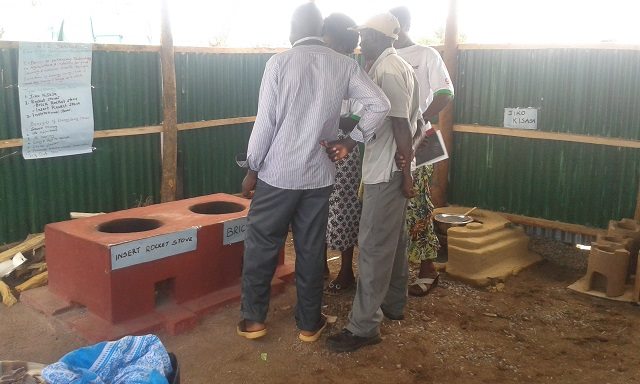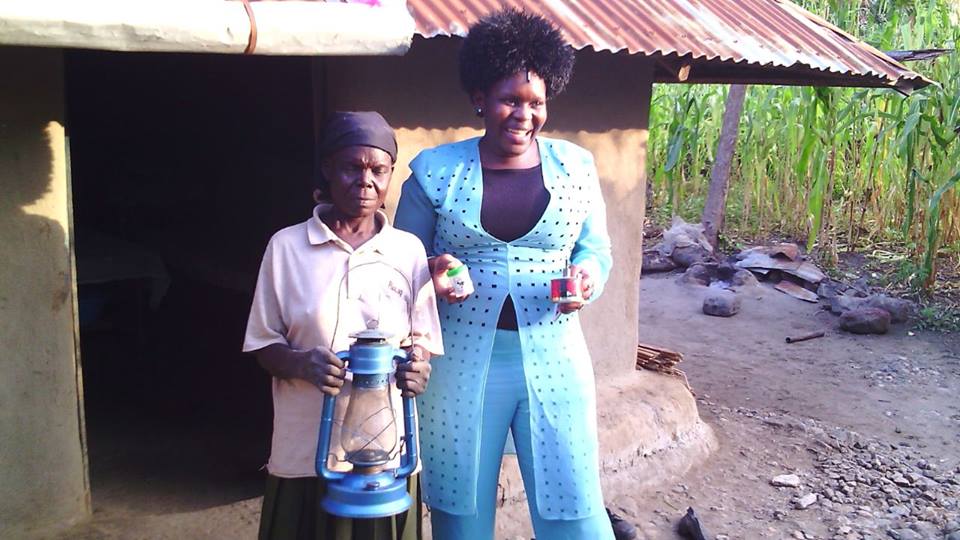Operation 'Nyangile' out Initiative
May 28, 2019
Story









Introduction
“Nyangile” is a Luo word for a kerosene lamp commonly used for lighting in most parts of Kenya. The word is used in this context to mean both the kerosene lamp and the traditional cooking techniques of using three stoned firewood places. In Africa the integral and fundamental role of a woman predisposes her to ensure there is food on the table which calls for her to use energy to accomplish the task. For centuries the energy used by many of these women forks has been kerosene for lighting and open fire places for cooking using firewood. The result is that many women in Africa bear the greatest impact of causes and effects on climate change.
The Situation in Homa Bay County
About 50.2% of Homa Bay County’s population (1,038,911 or 207,782 households) live below poverty line (Housing and Population Census 2009). Many rural homes still remain in “darkness” because they are either too far from the grid or cannot afford the stepping down costs; however near they are to the grid. Electricity connectivity is a paltry 3.3%, leaving kerosene and firewood as the main source of energy for many households. According to the Ministry of Devolution report (October 2014), Homa Bay County leads in use of kerosene at 94.6% as a source of energy. A GIZ report estimates annual total household expenditure on kerosene at Ksh2.4 billion in Homa Bay County. The same report estimates total annual firewood consumption in Homa Bay County at 474,000 tonnes, which is enough to cause havoc on vegetation or forest cover over a period of time. Other effects of kerosene usage and open fire places include:
Diseases: The black carbon and methane emitted by inefficient combustion are powerful pollutants that cause numerous health risks, such as respiratory and eye infections. Light from the kerosene lamp is very weak and gives off harmful fumes that damage the health and vision of those who use it for reading either at home or in schools. Exposure to air pollution caused by kerosene and firewood is particularly high among women and children, who spend most of their time near the domestic hearth or at school. Many children of school going age suffer from eye problems attributable to reading with kerosene lamps. Poverty: Kerosene is expensive compared to other low cost alternative energy sources. Homa Bay County households spend a bigger portion of their annual households’ income Ksh2.4 billion on kerosene for lighting and cooking (GIZ Report; 2012). It may be noted that women spend many hours collecting firewood, taking away crucial man hours which could be used for more productive economic activities. Thus, use of firewood further impoverishes those who are already poor! In addition, as stated in (v) below, variations in rainfall pattern has affected agricultural activities, which is the economic mainstay of the County. Fire Explosions: Kerosene easily explodes and causes fire and burns leading to destruction of property and human lives. Between 2014 and 2015, around 20 houses were burnt down in Homa Bay County, leading to loss of young promising lives and assets worth millions of Kenya Shillings. Forest Destruction: The rate of tree felling for firewood and charcoal burning in Homa Bay is alarming. This has led to drastic decline in forest cover, which has fallen to a paltry 0.34%. It is estimated that firewood consumption in Homa Bay County stands at 474,000 tonnes per year (GIZ, 2012). Thus, the possibility of turning Homa Bay landscape into a desert in the near future is very real, if this practice is not stopped. Climate Change: The sustained emission of carbon gasses from burning fossil fuels, accompanied with the onslaught on forests which should provide carbon sinks for the emissions, has only helped to increase temperatures in the atmosphere. This has caused a change in climate, characterized by variations in rainfall patterns associated with interludes of severe droughts and floods.
The Initiative Description and Activities
The above mentioned situation called for an intervention and ‘Operation Nyangile Out’ was birthed in 2014. The initiative is a five year project in which the Department of Energy and Natural Resources, Homa Bay County, is undertaking a massive campaign to eradicate kerosene lanterns and the traditional firewood open cooking space in the County.
The Department launched the campaign with the theme ‘Operation Nyangile Out!’ during this year’s County Energy Expo Week which took place from 28th June to 3rd July 2015. Majority of households are still stuck to their forefathers’ lifestyle of kerosene because they are not aware of its harmful effects and also ignorant of the available cost effective alternative clean energy sources such as solar lamps. The activity involves exhibition from Partners, private sector and stakeholders’ on clean energy, sensitization of the population about the dangers of kerosene through information communication materials, media talk shows, energy field days, skits and drama.
The initiative also involves building of capacity of energy entrepreneurs/ambassadors in the county and linking the people to dealers and manufacturers of solar lanterns. The project is undertaken in collaboration with other partners in green energy like GiZ, World Vision, Bboxx, Phillips Kenya, Sunken, D.light, Rural Development Solutions (RDS), Path finder foundation and CBOs and Community groups on green energy and environment. The massive sensitization is creating awareness and enabling many people and especially women to understand and adopt clean energy for lighting and cooking, thereby stimulating demand for solar products and improved energy saving cook stoves/biogas. The initiative uses the market model where citizens are encouraged to buy through SACCOS, groups and paying on mpesa as you would have bought the paraffin however after a certain period the individual owns the solar lantern. Continues monitoring and evaluation has indicated women and more so those in groups have adopted to clean energy. Some groups of women are the suppliers of the clean energy to other community members. Indeed nexus of gender and energy is critical for addressing climate change.
https://www.youtube.com/watch?v=rDQ8m2GErOw&feature=youtu.be




